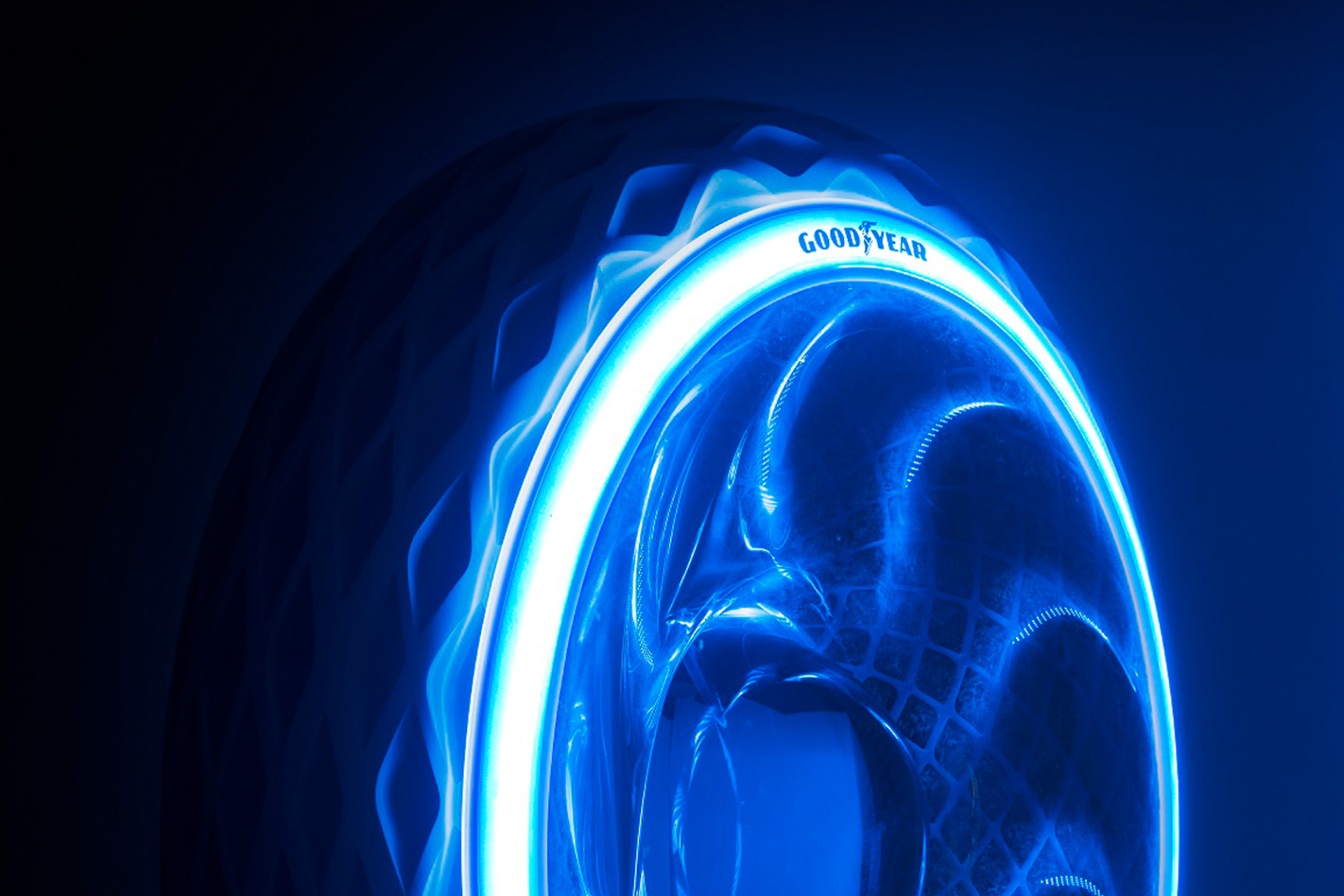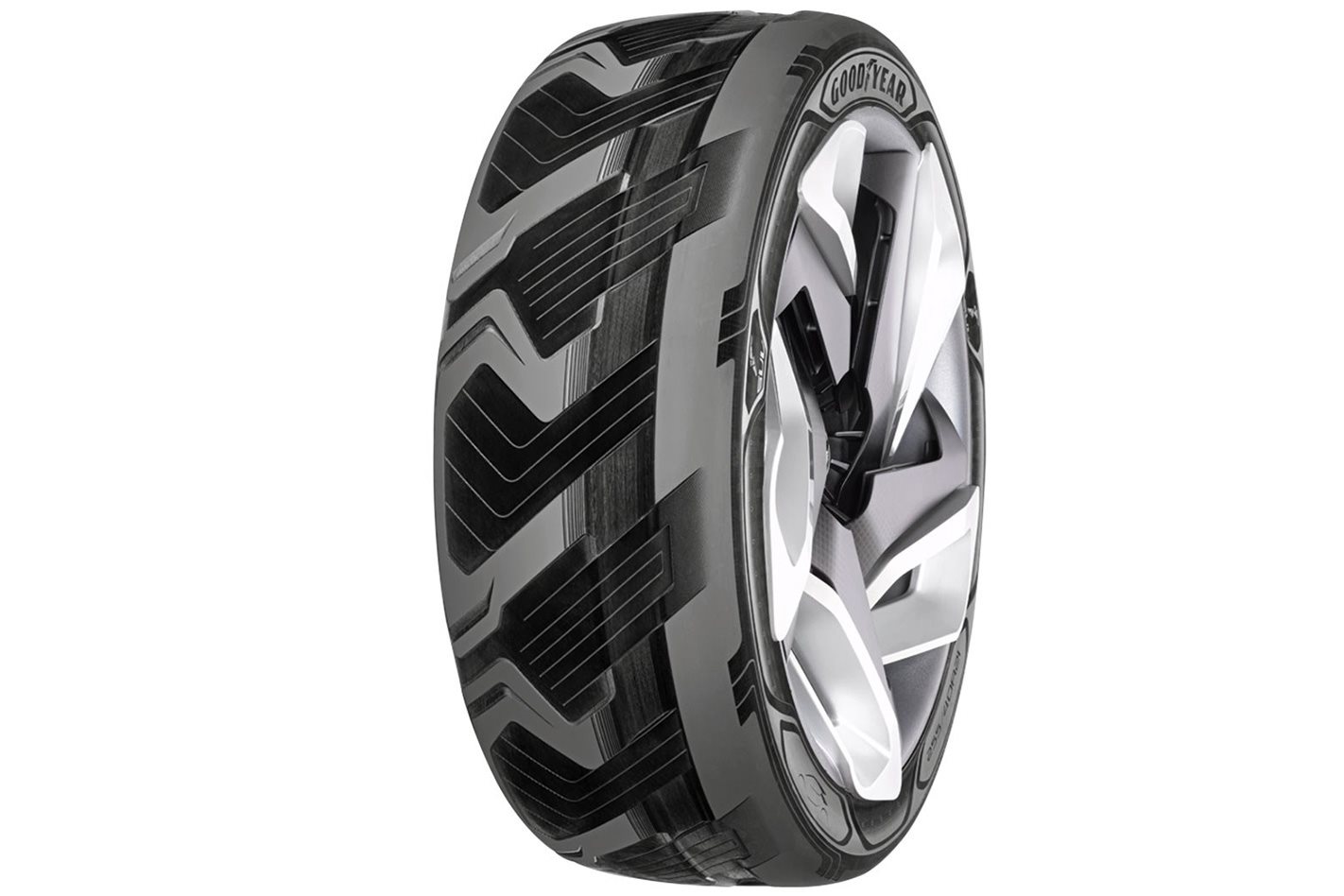DESPITE looking like coming from different planets, there is one core ingredient that links the Ford Model T and the McLaren 720S – the tyres.

For over a century the concept of car tyres has remain relatively unchanged, while many other aspects of modern vehicles have transformed to be almost unrecognisable for a time-travelling Henry Ford.
That’s not to say things haven’t changed in tyre technology. Advancements in construction and compounds have improved the performance of tyres, but visually not a great deal has changed. They’re still black hoops wrapping your rims, filled with a few psi of compressed air. The latter refinement came courtesy of John Boyd Dunlop in 1888. Radials arrived in 1946, while Goodyear’s Captive Air run-flats were co-developed with Chrysler back in 1958.
But rather than dwell on past achievements, Goodyear – which has been building tyres almost as long as cars have existed – has envisaged what the future of the tyre will look like. Two of the concepts are more realistic creations that could foreseeably be introduced in the next couple of decades, while the others are pretty out-there conceptual takes on the future of the tyre.
BH03

An integral aspect of an electric vehicle’s appeal is its range. Developing new batteries, motors and aerodynamic devices to extend that radius of operation is one of the key challenges facing automotive engineers and the tyre has become a critical aspect.
Dubbed the BH03, this tyre concept transforms the heat generated by the friction of the rolling tyre into electrical energy.
Goodyear claims the tyres use an “ultra-black texture” to absorb light and heat, and are constructed from a “thermo/piezoelectric material”, which simply means it’s capable of converting friction into an electrical charge.
While nowhere near enough to power the vehicle completely, Goodyear claims the BH03 can help improve overall range and efficiency for EVs and hybrids.
Triple Tube

While the BH03 caters to EV drivers, the Triple Tube is a Goodyear concept which should appeal to enthusiasts.
The conceptual design includes three internal tubes and an integrated pump which can manipulate the shape and, by extension, the footprint of the tyres while driving.
Capable of three core shapes, the Triple Tube tyre manipulates the carcass of the tyre to optimise traction and control for the conditions.
The first setting is focused on safety and economical driving, with all three internal tubes fully inflated. The ‘sporty’ mode reduces pressure within the more inward tube to create a form of artificial camber during turns. The system is designed to work alongside GPS data and can pre-empt oncoming curves in the road.
Finally, a ‘wet traction’ mode maximises pressure within the middle tube to reduce hydroplaning and improve wet-weather grip.
Oxygene

Moving away from the traditional construction of a tyre is Goodyear’s Oxygene concept, which is airless, 3D-printed, and has a “living” sidewall.
According to Goodyear, the living sidewall can absorb water, either from the air or as spray coming from the road’s surface – to mix with airborne carbon dioxide. Photosynthesis then turns the mixture into breathable oxygen.
By Goodyear’s calculations, if a city like Paris, with 2.5 million vehicles, put its entire fleet of cars on the Oxygene, the tyres could generate almost 3000 tonnes of oxygen a year from more than 4000 tonnes of carbon dioxide.
Constructed using 3D printing, the rubber compound is essentially puncture-proof, while the open tread and structure improves wet-weather grip.
Eagle 360 Urban

Here’s where things really diverge from the norm, with Goodyear’s completely spherical Eagle 360 Urban concept, which the company states is ‘powered’ by artificial intelligence.
Goodyear envisages the tyre being 3D printed with a super-flexible polymer, which is able to stretch and slightly change shape depending on the weather conditions.
Being a sphere, the concept allows vehicles to move sideways laterally.
The Eagle 360 Urban is envisaged for vehicles so far in the future, it isn’t even connected physically to the car, instead using magnetic levitation.
While the concept is still likely another century (or more) away from becoming a reality, it’s good to know that Goodyear is looking a long way beyond vulcanised convention.






